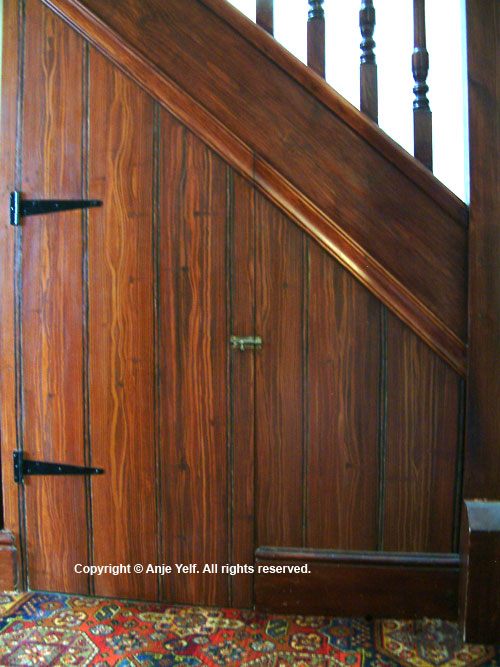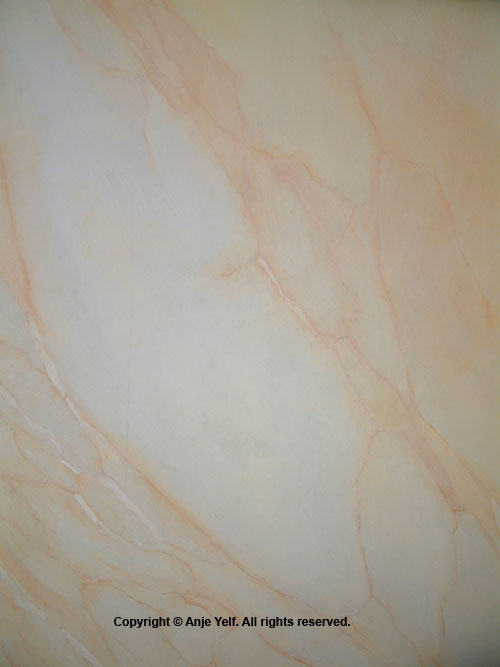Art Portfolio: trompe l'oeil
Tromp l'oeil means to trick or deceive the eye. Typically, Tromp l'oeil paintings are created to work from a given position. The trick works when the viewer realises the deception.
There is a difference between murals and Trompe l'oeil. Trompe l'oeil painting follow these rules:
1. All objects must be life size.
2. Show as little depth as possible.
3. Fit perfectly into the setting in order to be believable.
4. Use only static objects; butterflies for example, can be used as they can be static momentarily, but people do not look correct if 'frozen' in time.
I have created the following pieces in my own home, partly for pleasure and partly to resolve a problem.
Imitation tongue and groove panelling.
Medium: Oil Paint on MDF board
Understair cupboard painted in the style of 6" tongue and groove. When we developed the loft as studio space, we wanted to create a loft flight of stairs that
looked similar to the stairs accessing the first floor. Unfortunately, I could not find the right size of tongue and groove. The solution was to paint a Trompe l'oeil.
Imitation marble.
Medium: Emulsion Paint on plaster
Bedroom wall painted to mimic marble. Walls were sized prior to painting and sealed with a water-based varnish after.
Imitation fireplace.
Medium: Oil Paint on MDF board and wood
Unfortunately the living room had been stripped of the original mantlepiece and grate at some time in the past.
So. until it is replaced, I have painted an imitation black marble surround and false grate with brick back wall and bellows. The false grate was used to disguise an air-vent. Can you see where the original tiles end and the painted ones begin?




